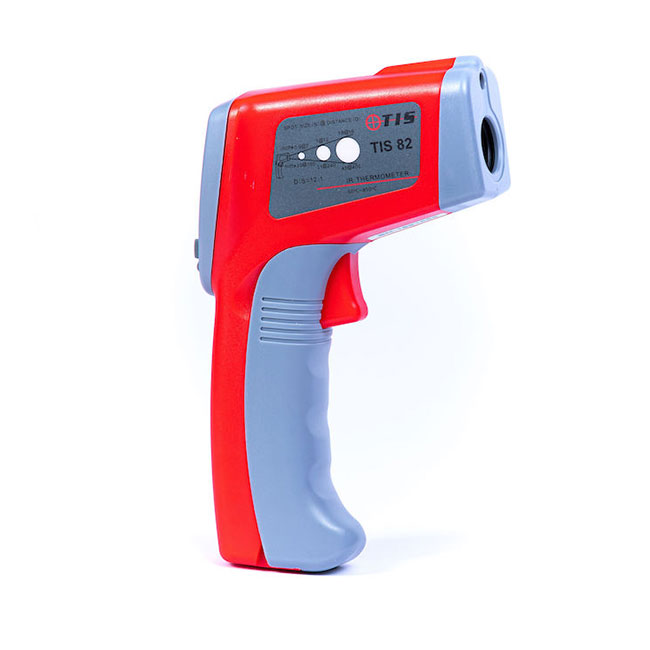A traditional thermometer uses mercury or a digital reading to give a result when the instrument is placed into the potential heat source, for example when a patient puts the thermometer under their tongue. Infrared (IR) technology enables the same process to take place but is non-contact and non-invasive.
Where is an IR thermometer used?

IR thermometers have become very popular since the COVID-19 pandemic because they enable non-contact testing from a distance, with a quick and simple reading. This enabled businesses to monitor staff and members of the public safely and quickly to detect symptoms of fever, ie. where skin temperature was hotter than it should be.
However, IR thermometers are commonly used in many industrial settings where equipment temperature needs to be checked for safety or operational reasons, and in other clinical settings such as laboratories. In situations where an object is fragile or dangerous, or where close proximity can be impractical, an IR thermometer enables the user to take an accurate reading without contact or proximity.
How does an IR thermometer differ to a traditional thermometer?
Where a traditional thermometer is placed in the heat source, an IR thermometer can take the same reading from a distance. When the instrument is triggered it detects radiation emitting from the target object. The unit then takes a reading of this emission and converts it into a temperature measurement. As the unit is only taking the measurement of a light reflection, an IR thermometer can only detect surface temperatures and not internal temperatures of an object.
How does IR technology work?
A sensor in the IR thermometer detects a temperature change by focussing on an object and measuring the energy emitting from that object. Any object which doesn’t have absolute zero temperature will have atoms moving within it. The speed of the movement is in direct correlation with the object’s temperature, so the higher the temperature the faster the molecules will be moving. These molecules will emit energy in the form of IR radiation. The wavelength of radiation is longer than those of visible light, so it cannot be seen by the naked eye, however, radiation can become visible when an object is very hot, for example when hot metal starts to glow. Ordinarily though, we can sense heat but can’t see it, such as heat from the sun or a radiator, which are both forms of IR heat.
An IR thermometer uses a lens to focus on the IR light being emitted from an object and uses a detector known as a thermopile (thermocouples connected in a series). When the IR radiation touches the thermopile surface it is absorbed by the thermopile and converted into heat, so the instrument is able to detect this output and convert it into a temperature reading.
What does an IR thermometer look like?
An IR thermometer is a simple hand-held environmental testing instrument which looks like a toy gun. It will have a sensor on the front which you point towards the source object and a small digital screen at the back for the output reading. Using an IR thermometer is very simple in that you simply point the unit at the object to be measured, press a trigger and a reading will be given.
What makes one IR thermometer better than another?
There are a number of factors which can determine the suitability of an IR thermometer:
- Accuracy - each unit will have a recommended proximity/distance which will enable you to judge the right distance for the type of reading you require and the surface area of the heat source you are measuring.
- Emissivity – this is how much IR energy the unit can detect at a time. It is better if you can adjust this.
- Temperature range – you can select an instrument with a temperature measuring range which suits your purpose, which can be a wide or a tight range.
- Reading speed or response time – a unit will give a quick reading but how fast can it take the measurement? You may need to measure moving objects or measure an object with varying temperature.
- Design – a unit needs to be robust and strong and with a durable, long-lasting lens
- Display screen – a unit can have a larger display screen and you ideally need one that is back-lit for use in darker conditions.
The TIS 82 IR thermometer supplied by Test Instrument Solutions has a 12:1 ratio of accuracy, which means, for example, you can measure a 4 inch area from a distance of 48 inches (12:1 x 4). It also has a temperature range of – 50°c to 850°c and has a reading response time of 500ms.
Please note that this section is for information purposes only. Anyone using equipment referred to in this section must be suitably qualified and/or experienced within the respective field. If in doubt before use, please consult a qualified electrician or engineer & thoroughly read all instruction booklets.